#emerged
Text
i’ve been hiding in trees and bushes to avoid people for almost my entire life, and i have the instinctual reaction to freeze, and stay completely still (excluding breathing). i can do this for upwards of 20 minutes without struggle if i know someone’s nearby and looking for me.
with this knowledge, i can say, with certainty, that the ranger method of “just stay still” is incredibly effective in almost every situation. not necessarily to the point they play it up to in the books, but it genuinely does work.
just curl up, wear clothes that don’t clash with the environment, don’t be where they expect, and
don’t.
fucking.
move.
avoid being at eye height if you can, but i once made direct eye contact with someone who was looking for me in the forest and they skipped straight past me anyways because they were looking for a moving, breathing, person, not a statue.
#ranger's apprentice#rangers apprentice#stealth#my camp leaders once had to blow the whistle during hide and seek#they thought i was missing#i was like#fifteen feet away#curled under a tree#they thought i’d fallen in the pond#but no#i was just born to avoid people#and hide in forests#it scared the shit out of them when i just#emerged#from the woods like a wraith#covered in mud from lying on the ground
24 notes
·
View notes
Text
everyone please read this and share if you can.
Brazil is going through one of the worst climatic crisis ever seen.
i live in the southernmost state, Rio Grande do Sul. we have been suffering from extreme, nonstop rainstorms for a week now. the rivers are flooding, reaching 4-6 meters above their natural level. people are being rescued by helicopters, neighborhoods are being evacuated. entire cities are slowly but surely becoming submerged in water. 60 people missing and counting. 32 deaths and counting.
and this is not new. last november also had a flood like this one. 50 dead, many material losses. it happened again this january, with thousands being left without power or water for days.
three catastrophical disasters within less than a year. three disasters only a few months apart.
this is not natural.
unsustainable agricultural practices and politics led to this. a complete disregard for nature led to this. greed led to this. always greed.
when it comes to the climate crisis, i cannot stress this enough: we need to act now if we still want to live. disasters like this are going to happen more often and they're going to be much, much worse. this flood is being considered the worst climatic catastrophe in the history of my state. i don't know how long it will take for another bigger one to happen and take its place. i just know it will be sooner than it should.
links to donate (if you can't donate, sharing already helps a lot):
link for non-brazilians (paybox)
link for brazilians
pix assufrgs
updated links are on the pinned post on my blog. in the meantime, pray for us.
#UPDATED LINKS ON THE PINNED POST ON MY BLOG#please share if you can#rio grande do sul#brasil#brazil#climate emergency#climate catastrophe#climate crisis#climate change#climate action
37K notes
·
View notes
Text
happy almost extremely loud sound wednesday monday everyone!!!


i cant believe its already almost extremely loud sound TO BE CONDUCTED AT AROUND 2:20 PM EST wednesday monday
edit: reblogs turned off bc YALL READ THE FUCKIN DATE
#buzzy#WOOOOO EXTREMELY LOUD SOUND WEDNESDAY MONDAY!!!!#fema#fcc#uspol#...i mean close enough w/e#us govt#emergency alert
61K notes
·
View notes
Text

every year I post this meme and every year people get more mad at me than they did the previous year
56K notes
·
View notes
Text
No paywall version here.
"Two and a half years ago, when I was asked to help write the most authoritative report on climate change in the United States, I hesitated...
In the end, I said yes, but reluctantly. Frankly, I was sick of admonishing people about how bad things could get. Scientists have raised the alarm over and over again, and still the temperature rises. Extreme events like heat waves, floods and droughts are becoming more severe and frequent, exactly as we predicted they would. We were proved right. It didn’t seem to matter.
Our report, which was released on Tuesday, contains more dire warnings. There are plenty of new reasons for despair. Thanks to recent scientific advances, we can now link climate change to specific extreme weather disasters, and we have a better understanding of how the feedback loops in the climate system can make warming even worse. We can also now more confidently forecast catastrophic outcomes if global emissions continue on their current trajectory.
But to me, the most surprising new finding in the Fifth National Climate Assessment is this: There has been genuine progress, too.
I’m used to mind-boggling numbers, and there are many of them in this report. Human beings have put about 1.6 trillion tons of carbon in the atmosphere since the Industrial Revolution — more than the weight of every living thing on Earth combined. But as we wrote the report, I learned other, even more mind-boggling numbers. In the last decade, the cost of wind energy has declined by 70 percent and solar has declined 90 percent. Renewables now make up 80 percent of new electricity generation capacity. Our country’s greenhouse gas emissions are falling, even as our G.D.P. and population grow.
In the report, we were tasked with projecting future climate change. We showed what the United States would look like if the world warms by 2 degrees Celsius. It wasn’t a pretty picture: more heat waves, more uncomfortably hot nights, more downpours, more droughts. If greenhouse emissions continue to rise, we could reach that point in the next couple of decades. If they fall a little, maybe we can stave it off until the middle of the century. But our findings also offered a glimmer of hope: If emissions fall dramatically, as the report suggested they could, we may never reach 2 degrees Celsius at all.
For the first time in my career, I felt something strange: optimism.
And that simple realization was enough to convince me that releasing yet another climate report was worthwhile.
Something has changed in the United States, and not just the climate. State, local and tribal governments all around the country have begun to take action. Some politicians now actually campaign on climate change, instead of ignoring or lying about it. Congress passed federal climate legislation — something I’d long regarded as impossible — in 2022 as we turned in the first draft.
[Note: She's talking about the Inflation Reduction Act and the Infrastructure Act, which despite the names were the two biggest climate packages passed in US history. And their passage in mid 2022 was a big turning point: that's when, for the first time in decades, a lot of scientists started looking at the numbers - esp the ones that would come from the IRA's funding - and said "Wait, holy shit, we have an actual chance."]
And while the report stresses the urgency of limiting warming to prevent terrible risks, it has a new message, too: We can do this. We now know how to make the dramatic emissions cuts we’d need to limit warming, and it’s very possible to do this in a way that’s sustainable, healthy and fair.
The conversation has moved on, and the role of scientists has changed. We’re not just warning of danger anymore. We’re showing the way to safety.
I was wrong about those previous reports: They did matter, after all. While climate scientists were warning the world of disaster, a small army of scientists, engineers, policymakers and others were getting to work. These first responders have helped move us toward our climate goals. Our warnings did their job.
To limit global warming, we need many more people to get on board... We need to reach those who haven’t yet been moved by our warnings. I’m not talking about the fossil fuel industry here; nor do I particularly care about winning over the small but noisy group of committed climate deniers. But I believe we can reach the many people whose eyes glaze over when they hear yet another dire warning or see another report like the one we just published.
The reason is that now, we have a better story to tell. The evidence is clear: Responding to climate change will not only create a better world for our children and grandchildren, but it will also make the world better for us right now.
Eliminating the sources of greenhouse gas emissions will make our air and water cleaner, our economy stronger and our quality of life better. It could save hundreds of thousands or even millions of lives across the country through air quality benefits alone. Using land more wisely can both limit climate change and protect biodiversity. Climate change most strongly affects communities that get a raw deal in our society: people with low incomes, people of color, children and the elderly. And climate action can be an opportunity to redress legacies of racism, neglect and injustice.
I could still tell you scary stories about a future ravaged by climate change, and they’d be true, at least on the trajectory we’re currently on. But it’s also true that we have a once-in-human-history chance not only to prevent the worst effects but also to make the world better right now. It would be a shame to squander this opportunity. So I don’t just want to talk about the problems anymore. I want to talk about the solutions. Consider this your last warning from me."
-via New York Times. Opinion essay by leading climate scientist Kate Marvel. November 18, 2023.
#WE CAN DO THIS#I SO TRULY BELIEVE THAT WE CAN DO THIS#WE CAN SAVE OURSELVES AND THE WORLD ALONG WITH US#climate crisis#united states#climate change#conservation#hope posting#sustainability#climate news#climate action#climate emergency#fossil fuels#global warming#environmentalism#climate hope#solarpunk#climate optimism#climate policy#earth#science#climate science#meteorology#extreme weather#renewable energy#solar power#wind power#renewables#carbon emissions#climate justice
33K notes
·
View notes
Text
Sometimes you’ve just got to think of your favorite character getting fucked against a wall to get through the work day.
27K notes
·
View notes
Text
*raises my hand to ask a question* what if we collectively refused to refer to AI as 'AI'? it's not artificial intelligence, artificial intelligence doesn't currently exist, it's just algorithms that use stolen input to reinforce prejudice. what if we protested by using a more accurate name? just spitballing here but what about Automated Biased Output (ABO for short)
31K notes
·
View notes
Text
the fact that the batfam has a canonically implied gc is amazing to me. like we knew this already but THE FACT THAT IT'S CANON. i just know they talk shit about each other on purpose
jason: [ photo of Dick face-first in a dumpster ]
jason: the first boy wonder, everyone
tim: the legacy was truly started by an icon
tim: is this what we should all aim to be?
damian: how did he even end up there? I refuse to believe he just fell.
jason: nah he just fell cause he's an idiot
dick: JASON TRIPPED ME DONT WVEN
tim: sounds like something someone embarrassed over falling would say
jason: shitty excuse. don't blame me for your failures
dick: ??????
#batfam#dick grayson#jason todd#damian wayne#dc comics#tim drake#babs: wasnt this for emergencies#jason: this is an emergency#duke when he got added: what is this#tim: hell#batman
8K notes
·
View notes
Text


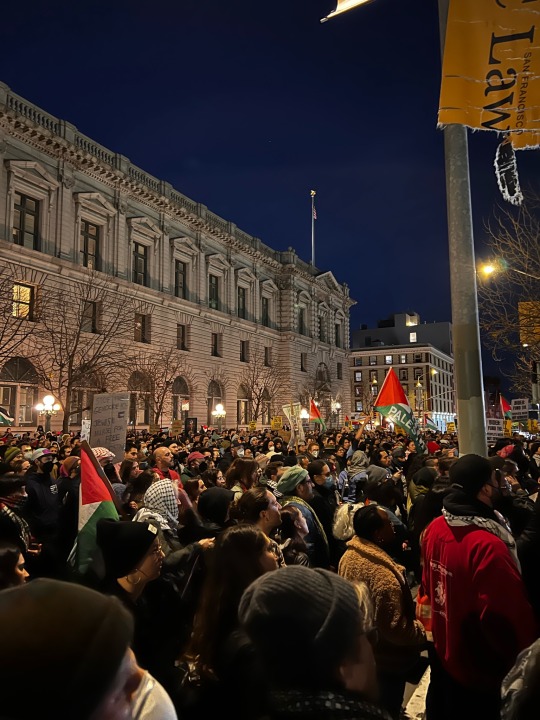

Emergency protest in San Francisco 2/13/24
🇵🇸
#palestine#gaza#free palestine#free gaza#san francisco#save rafah#rafah#emergency protests#protest#gaza genocide
9K notes
·
View notes
Text
these are pictures from before and after the floods. these are 2 days old:
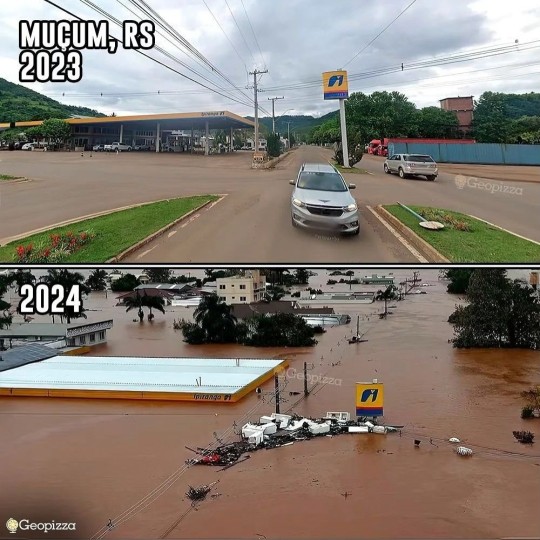

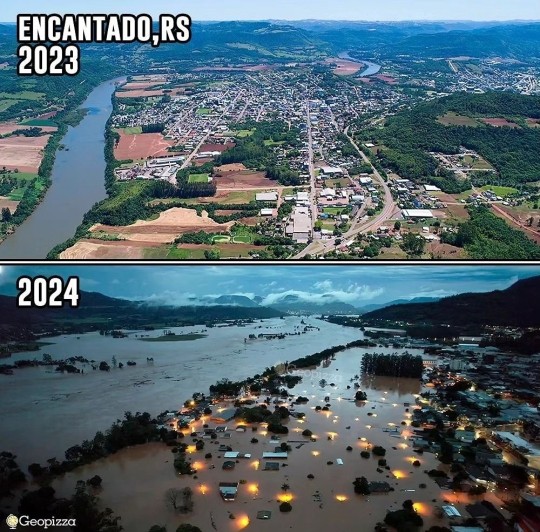
these other pictures are more recent, mostly from yesterday:
Rio Pardo, RS / Eldorado do Sul, RS
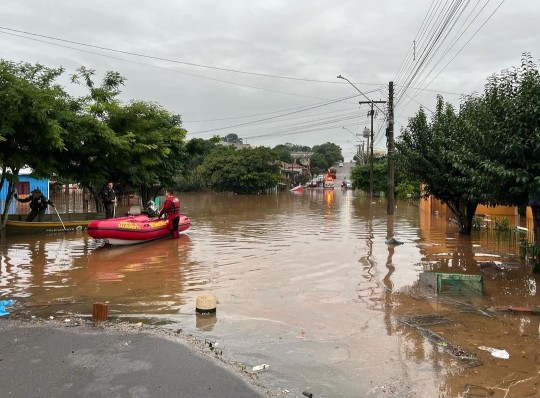

Canoas, RS
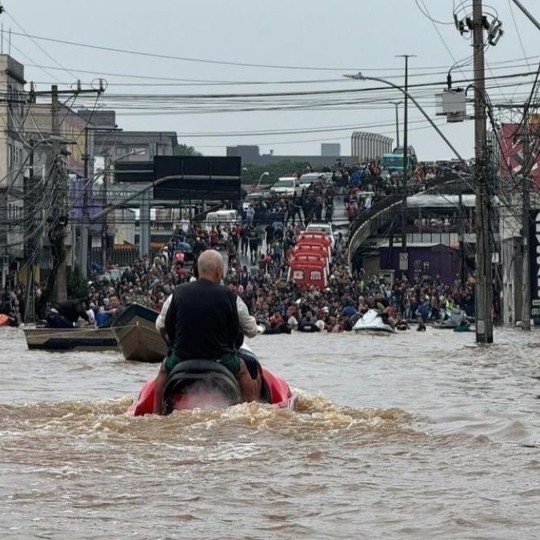
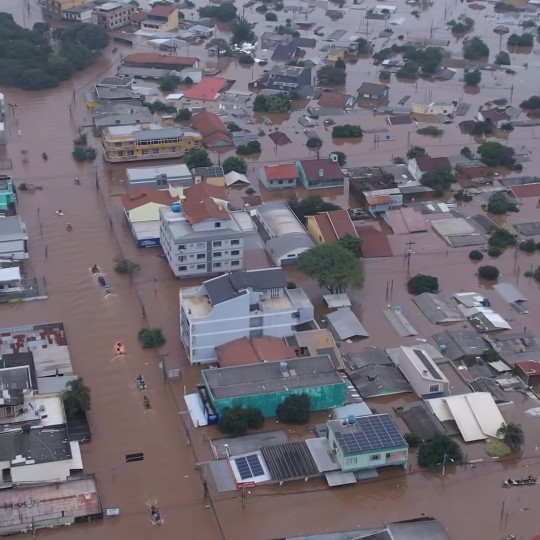
Porto Alegre, RS


this is a nightmare.
#rio grande do sul#brasil#brazil#climate change#climate emergency#climate crisis#climate catastrophe#flooding
11K notes
·
View notes
Text
So I was scrolling and saw this image in an article about the European heat wave,
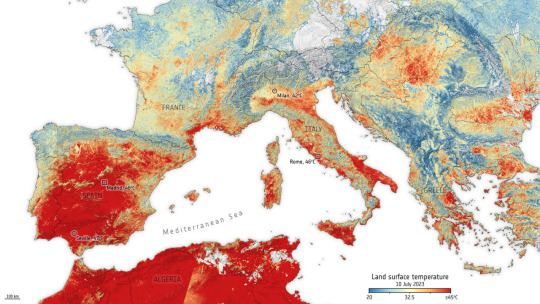
And was like, uh, are you missing something there, buddy? Like all that red in northern Africa? Because that's a lot of red.
And I was going to give them the benefit of doubt, since I don't know much about the climate in Northern Africa, aside from Morroco and Egypt, which seem like really hot places, so you know, maybe it's normal there?
But nope, that's not the case:
Some selections from the article:
"The region has been experiencing some of the most intense heat waves in recent years, but in many cases they’ve been under-reported due to misconceptions about Africans’ ability to withstand them.
“Africa is seen as a sunny and hot continent,” said Amadou Thierno Gaye, a research scientist and professor at Cheikh Anta Diop University in Dakar, the capital of Senegal. “People think we are used to heat, but we are having high temperatures for a longer duration. Nobody is used to this.”
"The Sahel, for instance, has been heating at a faster pace than the global average despite being hot already. Burkina Faso and Mali, both in West Africa’s Sahel, are among countries that are set to become almost uninhabitable by 2080, if the world continues on its current trajectory, a UK university study found. Its people are especially vulnerable due to shrinking resources, such as water, and poor amenities, and a dearth of trees and parks means there are few options for places to cool off."
23K notes
·
View notes
Text
Android Banking Trojan Chameleon can now bypass any Biometric Authentication
Introduction
In January 2023, the Chameleon Banking Trojan emerged as a significant threat, employing various distribution methods to infiltrate the Android ecosystem, with a specific focus on users in Australia and Poland. Aptly named “Chameleon,” this Trojan showcases its adaptability through multiple new commands, including the examination of app package names. Its primary targets are mobile…

View On WordPress
0 notes
Text
Listen, you should never film strangers in public without their consent, but I swear there need to be fines or something for people who do that shit in some spaces. For example: I had to go to the ER last night, and some jerk filmed a woman who just came in and was clearly having an asthma attack. She immediately got to go back, and he was unhappy about that. Believe me, I get that it sucks having to wait when you're in pain, but you don't get to pick who deserves care when. The medical system in the US is a nightmare, and the ER could be the worst moment of someone's life. No one deserves to be recorded because some jack ass believes someone doesn't look like they need care.
This is fine to reblog. People who film strangers should be shamed if nothing else.
#ccyy talks#sorry for posting this here but I'm pissed and this shit really needs to stop#For all I know he recorded me too cause I'm young and look healthy but got to go back next#Sorry about your cough buddy but the way things work I was a more immediate emergency#1k#5k#10k#30k#this post clearly has a life of its own now#and in case someone wants to know some clarifications for common points#people in a position of authority/actively hurting someone with the intent to protect/help the person is fine#so cops doctors nurses mental health workers and educators (to name a few) who actively are abusing their power and authority? free game#this post was filming random ass people for Content(tm)#random ass people more so those in distress aren't your content and you do not know the harm you can do to someone by posting that shit#50k
51K notes
·
View notes
Text
"With “green corridors” that mimic the natural forest, the Colombian city is driving down temperatures — and could become five degrees cooler over the next few decades.
In the face of a rapidly heating planet, the City of Eternal Spring — nicknamed so thanks to its year-round temperate climate — has found a way to keep its cool.
Previously, Medellín had undergone years of rapid urban expansion, which led to a severe urban heat island effect — raising temperatures in the city to significantly higher than in the surrounding suburban and rural areas. Roads and other concrete infrastructure absorb and maintain the sun’s heat for much longer than green infrastructure.
“Medellín grew at the expense of green spaces and vegetation,” says Pilar Vargas, a forest engineer working for City Hall. “We built and built and built. There wasn’t a lot of thought about the impact on the climate. It became obvious that had to change.”
Efforts began in 2016 under Medellín’s then mayor, Federico Gutiérrez (who, after completing one term in 2019, was re-elected at the end of 2023). The city launched a new approach to its urban development — one that focused on people and plants.
The $16.3 million initiative led to the creation of 30 Green Corridors along the city’s roads and waterways, improving or producing more than 70 hectares of green space, which includes 20 kilometers of shaded routes with cycle lanes and pedestrian paths.
These plant and tree-filled spaces — which connect all sorts of green areas such as the curb strips, squares, parks, vertical gardens, sidewalks, and even some of the seven hills that surround the city — produce fresh, cooling air in the face of urban heat. The corridors are also designed to mimic a natural forest with levels of low, medium and high plants, including native and tropical plants, bamboo grasses and palm trees.
Heat-trapping infrastructure like metro stations and bridges has also been greened as part of the project and government buildings have been adorned with green roofs and vertical gardens to beat the heat. The first of those was installed at Medellín’s City Hall, where nearly 100,000 plants and 12 species span the 1,810 square meter surface.
“It’s like urban acupuncture,” says Paula Zapata, advisor for Medellín at C40 Cities, a global network of about 100 of the world’s leading mayors. “The city is making these small interventions that together act to make a big impact.”
At the launch of the project, 120,000 individual plants and 12,500 trees were added to roads and parks across the city. By 2021, the figure had reached 2.5 million plants and 880,000 trees. Each has been carefully chosen to maximize their impact.
“The technical team thought a lot about the species used. They selected endemic ones that have a functional use,” explains Zapata.
The 72 species of plants and trees selected provide food for wildlife, help biodiversity to spread and fight air pollution. A study, for example, identified Mangifera indica as the best among six plant species found in Medellín at absorbing PM2.5 pollution — particulate matter that can cause asthma, bronchitis and heart disease — and surviving in polluted areas due to its “biochemical and biological mechanisms.”
And the urban planting continues to this day.
The groundwork is carried out by 150 citizen-gardeners like Pineda, who come from disadvantaged and minority backgrounds, with the support of 15 specialized forest engineers. Pineda is now the leader of a team of seven other gardeners who attend to corridors all across the city, shifting depending on the current priorities...
“I’m completely in favor of the corridors,” says [Victoria Perez, another citizen-gardener], who grew up in a poor suburb in the city of 2.5 million people. “It really improves the quality of life here.”
Wilmar Jesus, a 48-year-old Afro-Colombian farmer on his first day of the job, is pleased about the project’s possibilities for his own future. “I want to learn more and become better,” he says. “This gives me the opportunity to advance myself.”
The project’s wider impacts are like a breath of fresh air. Medellín’s temperatures fell by 2°C in the first three years of the program, and officials expect a further decrease of 4 to 5C over the next few decades, even taking into account climate change. In turn, City Hall says this will minimize the need for energy-intensive air conditioning...
In addition, the project has had a significant impact on air pollution. Between 2016 and 2019, the level of PM2.5 fell significantly, and in turn the city’s morbidity rate from acute respiratory infections decreased from 159.8 to 95.3 per 1,000 people [Note: That means the city's rate of people getting sick with lung/throat/respiratory infections.]
There’s also been a 34.6 percent rise in cycling in the city, likely due to the new bike paths built for the project, and biodiversity studies show that wildlife is coming back — one sample of five Green Corridors identified 30 different species of butterfly.
Other cities are already taking note. Bogotá and Barranquilla have adopted similar plans, among other Colombian cities, and last year São Paulo, Brazil, the largest city in South America, began expanding its corridors after launching them in 2022.
“For sure, Green Corridors could work in many other places,” says Zapata."
-via Reasons to Be Cheerful, March 4, 2024
#colombia#brazil#urban#urban landscape#urban planning#cities#civil engineering#green architecture#green spaces#urban heat#urban heat island effect#weather#meteorology#global warming#climate change#climate hope#climate optimism#climate emergency#climate action#environment#environmental news#city architecture#bicycling#native plants#biodiversity#good news#hope#solarpunk#ecopunk#hopepunk
15K notes
·
View notes

